CHEMICAL IDENTIFICATION
-
RTECS NUMBER :
-
VG9625000
-
CHEMICAL NAME :
-
Resorcinol
-
CAS REGISTRY NUMBER :
-
108-46-3
-
BEILSTEIN REFERENCE NO. :
-
0906905
-
LAST UPDATED :
-
199712
-
DATA ITEMS CITED :
-
57
-
MOLECULAR FORMULA :
-
C6-H6-O2
-
MOLECULAR WEIGHT :
-
110.12
-
WISWESSER LINE NOTATION :
-
QR CQ
HEALTH HAZARD DATA
ACUTE TOXICITY DATA
-
TYPE OF TEST :
-
Standard Draize test
-
ROUTE OF EXPOSURE :
-
Administration onto the skin
-
SPECIES OBSERVED :
-
Rodent - rabbit
-
TYPE OF TEST :
-
Standard Draize test
-
ROUTE OF EXPOSURE :
-
Administration onto the skin
-
SPECIES OBSERVED :
-
Rodent - rabbit
-
TYPE OF TEST :
-
Standard Draize test
-
ROUTE OF EXPOSURE :
-
Administration into the eye
-
SPECIES OBSERVED :
-
Rodent - rabbit
-
TYPE OF TEST :
-
LDLo - Lowest published lethal dose
-
ROUTE OF EXPOSURE :
-
Oral
-
SPECIES OBSERVED :
-
Human
-
DOSE/DURATION :
-
29 mg/kg
-
TOXIC EFFECTS :
-
Details of toxic effects not reported other than lethal dose value
-
TYPE OF TEST :
-
LD50 - Lethal dose, 50 percent kill
-
ROUTE OF EXPOSURE :
-
Oral
-
SPECIES OBSERVED :
-
Rodent - rat
-
DOSE/DURATION :
-
301 mg/kg
-
TOXIC EFFECTS :
-
Behavioral - convulsions or effect on seizure threshold Gastrointestinal - changes in structure or function of salivary glands Lungs, Thorax, or Respiration - dyspnea
-
TYPE OF TEST :
-
LCLo - Lowest published lethal concentration
-
ROUTE OF EXPOSURE :
-
Inhalation
-
SPECIES OBSERVED :
-
Rodent - rat
-
DOSE/DURATION :
-
160 mg/m3/1H
-
TOXIC EFFECTS :
-
Details of toxic effects not reported other than lethal dose value
-
TYPE OF TEST :
-
LDLo - Lowest published lethal dose
-
ROUTE OF EXPOSURE :
-
Subcutaneous
-
SPECIES OBSERVED :
-
Rodent - rat
-
DOSE/DURATION :
-
400 mg/kg
-
TOXIC EFFECTS :
-
Behavioral - excitement Behavioral - tetany Behavioral - coma
-
TYPE OF TEST :
-
LD50 - Lethal dose, 50 percent kill
-
ROUTE OF EXPOSURE :
-
Oral
-
SPECIES OBSERVED :
-
Rodent - mouse
-
DOSE/DURATION :
-
200 mg/kg
-
TOXIC EFFECTS :
-
Details of toxic effects not reported other than lethal dose value
-
TYPE OF TEST :
-
LD50 - Lethal dose, 50 percent kill
-
ROUTE OF EXPOSURE :
-
Intraperitoneal
-
SPECIES OBSERVED :
-
Rodent - mouse
-
DOSE/DURATION :
-
215 mg/kg
-
TOXIC EFFECTS :
-
Details of toxic effects not reported other than lethal dose value
-
TYPE OF TEST :
-
LD50 - Lethal dose, 50 percent kill
-
ROUTE OF EXPOSURE :
-
Subcutaneous
-
SPECIES OBSERVED :
-
Rodent - mouse
-
DOSE/DURATION :
-
213 mg/kg
-
TOXIC EFFECTS :
-
Details of toxic effects not reported other than lethal dose value
-
TYPE OF TEST :
-
LDLo - Lowest published lethal dose
-
ROUTE OF EXPOSURE :
-
Intravenous
-
SPECIES OBSERVED :
-
Mammal - dog
-
DOSE/DURATION :
-
700 mg/kg
-
TOXIC EFFECTS :
-
Details of toxic effects not reported other than lethal dose value
-
TYPE OF TEST :
-
LDLo - Lowest published lethal dose
-
ROUTE OF EXPOSURE :
-
Subcutaneous
-
SPECIES OBSERVED :
-
Mammal - cat
-
DOSE/DURATION :
-
110 mg/kg
-
TOXIC EFFECTS :
-
Behavioral - convulsions or effect on seizure threshold Blood - methemoglobinemia-carboxyhemoglobin
-
TYPE OF TEST :
-
LD50 - Lethal dose, 50 percent kill
-
ROUTE OF EXPOSURE :
-
Administration onto the skin
-
SPECIES OBSERVED :
-
Rodent - rabbit
-
DOSE/DURATION :
-
3360 mg/kg
-
TOXIC EFFECTS :
-
Skin and Appendages - primary irritation (after topical exposure) Nutritional and Gross Metabolic - weight loss or decreased weight gain
-
TYPE OF TEST :
-
LDLo - Lowest published lethal dose
-
ROUTE OF EXPOSURE :
-
Subcutaneous
-
SPECIES OBSERVED :
-
Rodent - guinea pig
-
DOSE/DURATION :
-
400 mg/kg
-
TOXIC EFFECTS :
-
Behavioral - excitement Behavioral - tetany Behavioral - coma
-
TYPE OF TEST :
-
LDLo - Lowest published lethal dose
-
ROUTE OF EXPOSURE :
-
Parenteral
-
SPECIES OBSERVED :
-
Amphibian - frog
-
DOSE/DURATION :
-
270 mg/kg
-
TOXIC EFFECTS :
-
Peripheral Nerve and Sensation - spastic paralysis with or without sensory change Behavioral - convulsions or effect on seizure threshold Cardiac - other changes
-
TYPE OF TEST :
-
TDLo - Lowest published toxic dose
-
ROUTE OF EXPOSURE :
-
Oral
-
SPECIES OBSERVED :
-
Rodent - rat
-
DOSE/DURATION :
-
5400 mg/kg/17D-I
-
TOXIC EFFECTS :
-
Endocrine - changes in thymus weight
-
TYPE OF TEST :
-
TDLo - Lowest published toxic dose
-
ROUTE OF EXPOSURE :
-
Oral
-
SPECIES OBSERVED :
-
Rodent - rat
-
DOSE/DURATION :
-
8450 mg/kg/13W-I
-
TOXIC EFFECTS :
-
Liver - changes in liver weight Endocrine - changes in adrenal weight
-
TYPE OF TEST :
-
TDLo - Lowest published toxic dose
-
ROUTE OF EXPOSURE :
-
Oral
-
SPECIES OBSERVED :
-
Rodent - rat
-
DOSE/DURATION :
-
504 mg/kg/28D-C
-
TOXIC EFFECTS :
-
Endocrine - changes in adrenal weight
-
TYPE OF TEST :
-
TDLo - Lowest published toxic dose
-
ROUTE OF EXPOSURE :
-
Oral
-
SPECIES OBSERVED :
-
Rodent - mouse
-
DOSE/DURATION :
-
3600 mg/kg/17D-I
-
TOXIC EFFECTS :
-
Related to Chronic Data - death
-
TYPE OF TEST :
-
TDLo - Lowest published toxic dose
-
ROUTE OF EXPOSURE :
-
Oral
-
SPECIES OBSERVED :
-
Rodent - mouse
-
DOSE/DURATION :
-
27300 mg/kg/13W-I
-
TOXIC EFFECTS :
-
Nutritional and Gross Metabolic - weight loss or decreased weight gain Related to Chronic Data - death
-
TYPE OF TEST :
-
TDLo - Lowest published toxic dose
-
ROUTE OF EXPOSURE :
-
Administration onto the skin
-
SPECIES OBSERVED :
-
Rodent - mouse
-
DOSE/DURATION :
-
4800 mg/kg/12W-I
-
TOXIC EFFECTS :
-
Tumorigenic - equivocal tumorigenic agent by RTECS criteria Skin and Appendages - tumors
MUTATION DATA
-
TYPE OF TEST :
-
Cytogenetic analysis
-
TEST SYSTEM :
-
Rodent - hamster Ovary
-
REFERENCE :
-
CALEDQ Cancer Letters (Shannon, Ireland). (Elsevier Scientific Pub. Ireland Ltd., POB 85, Limerick, Ireland) V.1- 1975- Volume(issue)/page/year: 14,251,1981 *** REVIEWS *** ACGIH TLV-Not classifiable as a human carcinogen DTLVS* The Threshold Limit Values (TLVs) and Biological Exposure Indices (BEIs) booklet issues by American Conference of Governmental Industrial Hygienists (ACGIH), Cincinnati, OH, 1996 Volume(issue)/page/year: TLV/BEI,1997 ACGIH TLV-STEL 90 mg/m3 (20 ppm) DTLVS* The Threshold Limit Values (TLVs) and Biological Exposure Indices (BEIs) booklet issues by American Conference of Governmental Industrial Hygienists (ACGIH), Cincinnati, OH, 1996 Volume(issue)/page/year: TLV/BEI,1997 ACGIH TLV-TWA 45 mg/m3 (10 ppm) DTLVS* The Threshold Limit Values (TLVs) and Biological Exposure Indices (BEIs) booklet issues by American Conference of Governmental Industrial Hygienists (ACGIH), Cincinnati, OH, 1996 Volume(issue)/page/year: TLV/BEI,1997 IARC Cancer Review:Animal Inadequate Evidence IMEMDT IARC Monographs on the Evaluation of Carcinogenic Risk of Chemicals to Man. (WHO Publications Centre USA, 49 Sheridan Ave., Albany, NY 12210) V.1- 1972- Volume(issue)/page/year: 15,155,1977 IARC Cancer Review:Human No Adequate Data IMEMDT IARC Monographs on the Evaluation of Carcinogenic Risk of Chemicals to Man. (WHO Publications Centre USA, 49 Sheridan Ave., Albany, NY 12210) V.1- 1972- Volume(issue)/page/year: 15,155,1977 IARC Cancer Review:Group 3 IMSUDL IARC Monographs, Supplement. (WHO Publications Centre USA, 49 Sheridan Ave., Albany, NY 12210) No.1- 1979- Volume(issue)/page/year: 7,56,1987 TOXICOLOGY REVIEW MUREAV Mutation Research. (Elsevier Science Pub. B.V., POB 211, 1000 AE Amsterdam, Netherlands) V.1- 1964- Volume(issue)/page/year: 47,75,1978 TOXICOLOGY REVIEW JACTDZ Journal of the American College of Toxicology. (Mary Ann Liebert, Inc., 1651 Third Ave., New York, NY 10128) V.1-12, 1982-1993. Discontinued. Volume(issue)/page/year: 5(3),167,1986 *** OCCUPATIONAL EXPOSURE LIMITS *** OEL-AUSTRALIA:TWA 10 ppm (45 mg/m3);STEL 20 ppm (90 mg/m3) JAN 1993 OEL-BELGIUM:TWA 10 ppm (45 mg/m3);STEL 20 ppm (90 mg/m3) JAN 1993 OEL-DENMARK:TWA 10 ppm (45 mg/m3) JAN 1993 OEL-FINLAND:TWA 10 ppm (45 mg/m3);STEL 20 ppm (90 mg/m3) JAN 1993 OEL-FRANCE:TWA 10 ppm (45 mg/m3) JAN 1993 OEL-HUNGARY:TWA 45 mg/m3;STEL 90 mg/m3;Skin JAN 1993 OEL-THE NETHERLANDS:TWA 10 ppm (45 mg/m3) JAN 1993 OEL-SWITZERLAND:TWA 10 ppm (45 mg/m3) JAN 1993 OEL-UNITED KINGDOM:TWA 10 ppm (45 mg/m3);STEL 20 ppm (90 mg/m3) JAN 1993 OEL IN BULGARIA, COLOMBIA, JORDAN, KOREA check ACGIH TLV OEL IN NEW ZEALAND, SINGAPORE, VIETNAM check ACGIH TLV *** NIOSH STANDARDS DEVELOPMENT AND SURVEILLANCE DATA *** NIOSH RECOMMENDED EXPOSURE LEVEL (REL) : NIOSH REL TO RESORCINAL-air:10H TWA 10 ppm;STEL 20 ppm REFERENCE : NIOSH* National Institute for Occupational Safety and Health, U.S. Dept. of Health, Education, and Welfare, Reports and Memoranda. Volume(issue)/page/year: DHHS #92-100,1992 NIOSH OCCUPATIONAL EXPOSURE SURVEY DATA : NOHS - National Occupational Hazard Survey (1974) NOHS Hazard Code - 67220 No. of Facilities: 4488 (estimated) No. of Industries: 45 No. of Occupations: 42 No. of Employees: 40431 (estimated) NOES - National Occupational Exposure Survey (1983) NOES Hazard Code - 67220 No. of Facilities: 6842 (estimated) No. of Industries: 30 No. of Occupations: 43 No. of Employees: 100792 (estimated) No. of Female Employees: 56465 (estimated)
|
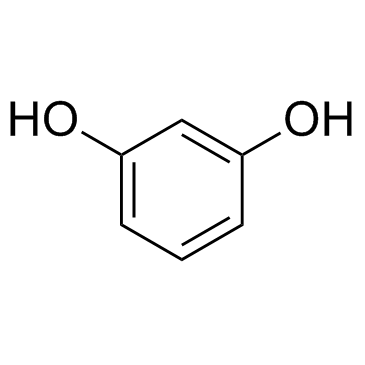






 CAS#:108-73-6
CAS#:108-73-6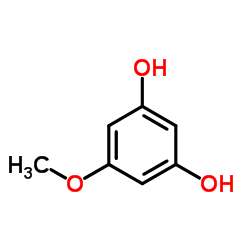 CAS#:2174-64-3
CAS#:2174-64-3 CAS#:87199-18-6
CAS#:87199-18-6 CAS#:626-02-8
CAS#:626-02-8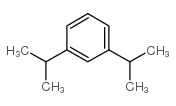 CAS#:99-62-7
CAS#:99-62-7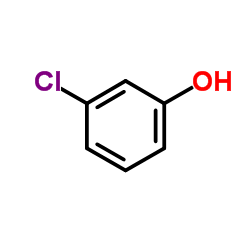 CAS#:108-43-0
CAS#:108-43-0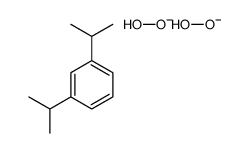 CAS#:721-26-6
CAS#:721-26-6 CAS#:303-07-1
CAS#:303-07-1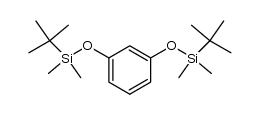 CAS#:120951-86-2
CAS#:120951-86-2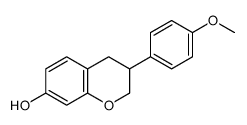 CAS#:10499-17-9
CAS#:10499-17-9![1,2,3-trimethoxy-5-[3-(3-prop-2-enoxyphenoxy)prop-1-enyl]benzene structure](https://image.chemsrc.com/caspic/314/104761-74-2.png) CAS#:104761-74-2
CAS#:104761-74-2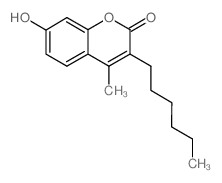 CAS#:109565-17-5
CAS#:109565-17-5![4-methyl-[1]benzofuro[3,2-g]chromen-2-one structure](https://image.chemsrc.com/caspic/460/105290-13-9.png) CAS#:105290-13-9
CAS#:105290-13-9 CAS#:10462-54-1
CAS#:10462-54-1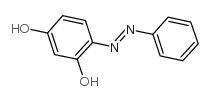 CAS#:2051-85-6
CAS#:2051-85-6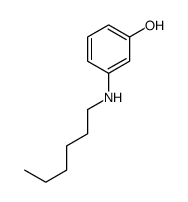 CAS#:109292-69-5
CAS#:109292-69-5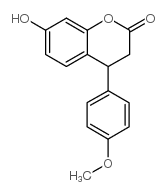 CAS#:109386-28-9
CAS#:109386-28-9 CAS#:100883-69-0
CAS#:100883-69-0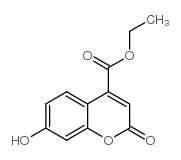 CAS#:1084-45-3
CAS#:1084-45-3
